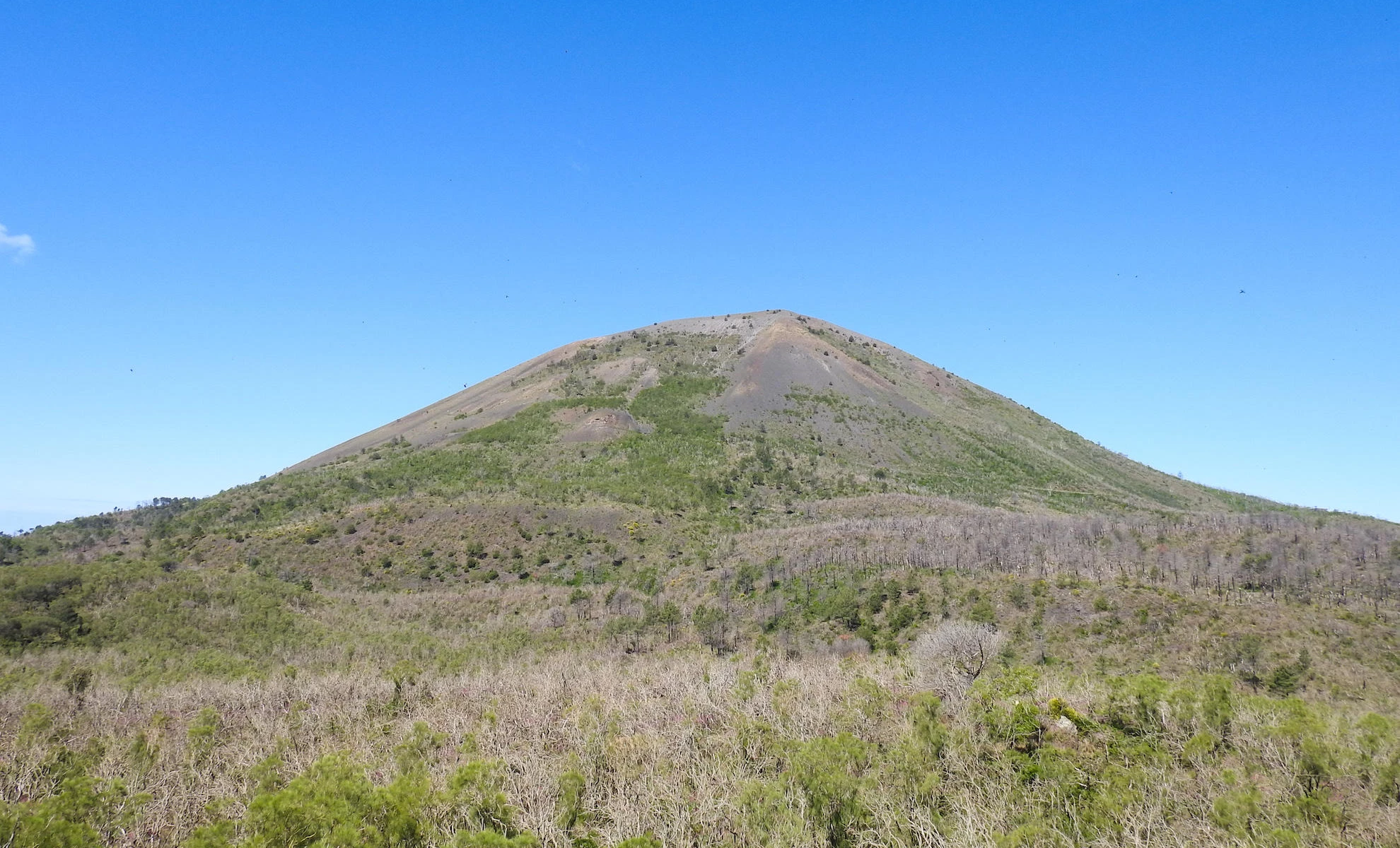A path called “Valley of Hell” inspires a little fear. If this happens to be on Vesuvius, the suspicion is even more founded.
Vesuvius from the Valley of Hell | Ph. Raffaele Imondi - Trentaremi
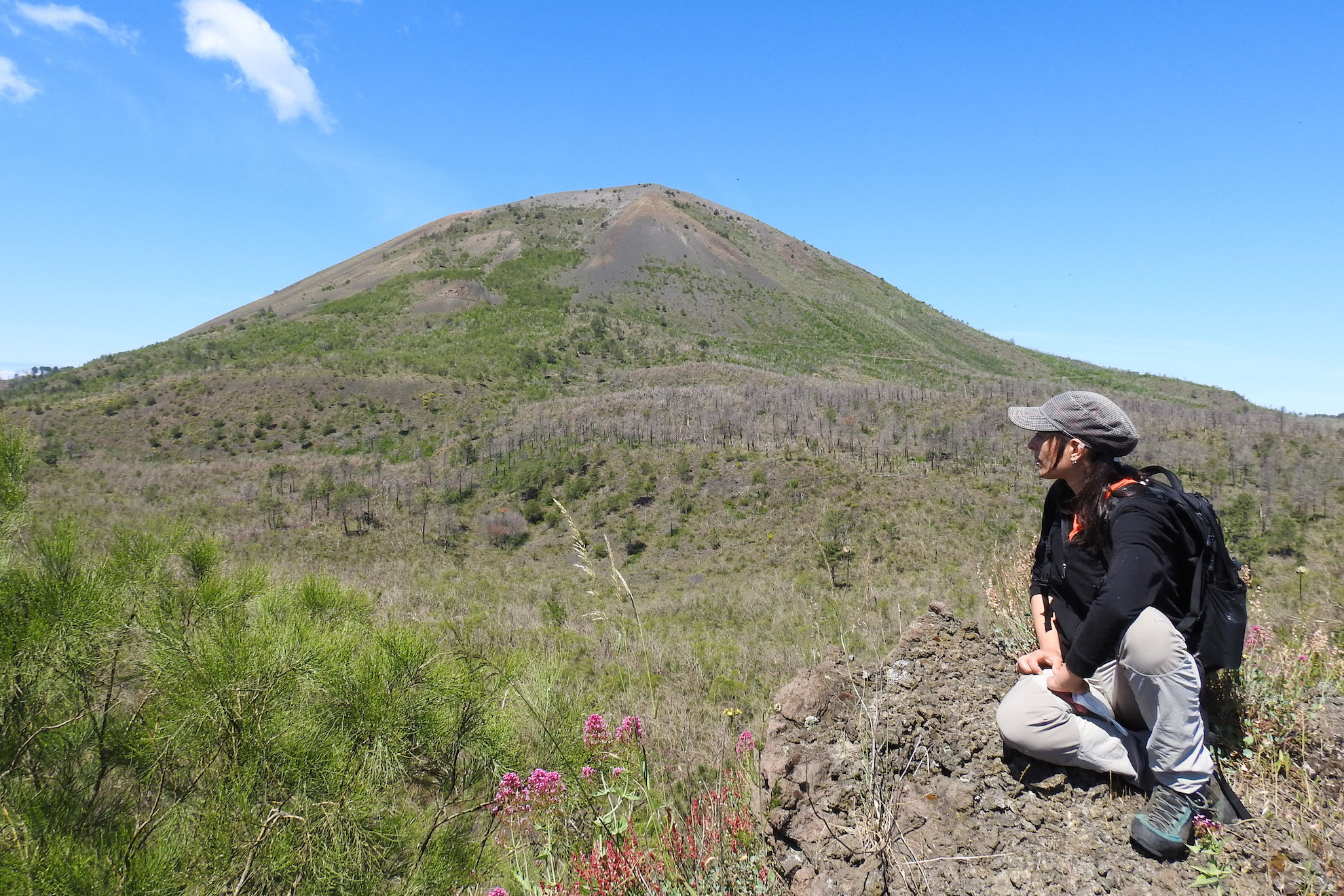
But despite its name, the Valley of Hell, with its two and a half kilometres of descent and plain, is one of the most beautiful routes in the Vesuvius National Park. «The valley separates the former Monte Somma volcano from its younger and more famous colleague and today it has been partially invaded by the lava of the last eruption in 1944, colonised by the lichen of Vesuvius, an endemic species with silver tints» says Giulia, one of the park's environmental guides.
“Vesuvius is, after the Glaciers, the most impressive exhibition of the energies of nature I ever saw”Percy Bysshe Shelley
The vegetation that grows on Vesuvius is restless: it changes according to the season and constantly takes on different looks. «In autumn the bare branches meet and intertwine drawing different shapes and the rock crystals shine on the damp soil. In spring, however, the landscape welcomes us with the fuchsia of valerian, the yellow of the poppies and the white of the locust trees in bloom. In summer, broom triumphs, with its cheerful and lively yellow», says Giulia. There are three types of broom: Scotch broom, Spanish broom and Mount Etna broom. In the Valley of Hell, they all bloom at different times, releasing perfumes and suggestions that give life to the famous broom forest of Vesuvius.
A beautiful example of rope lava | Ph. Raffaele Imondi - Trentaremi
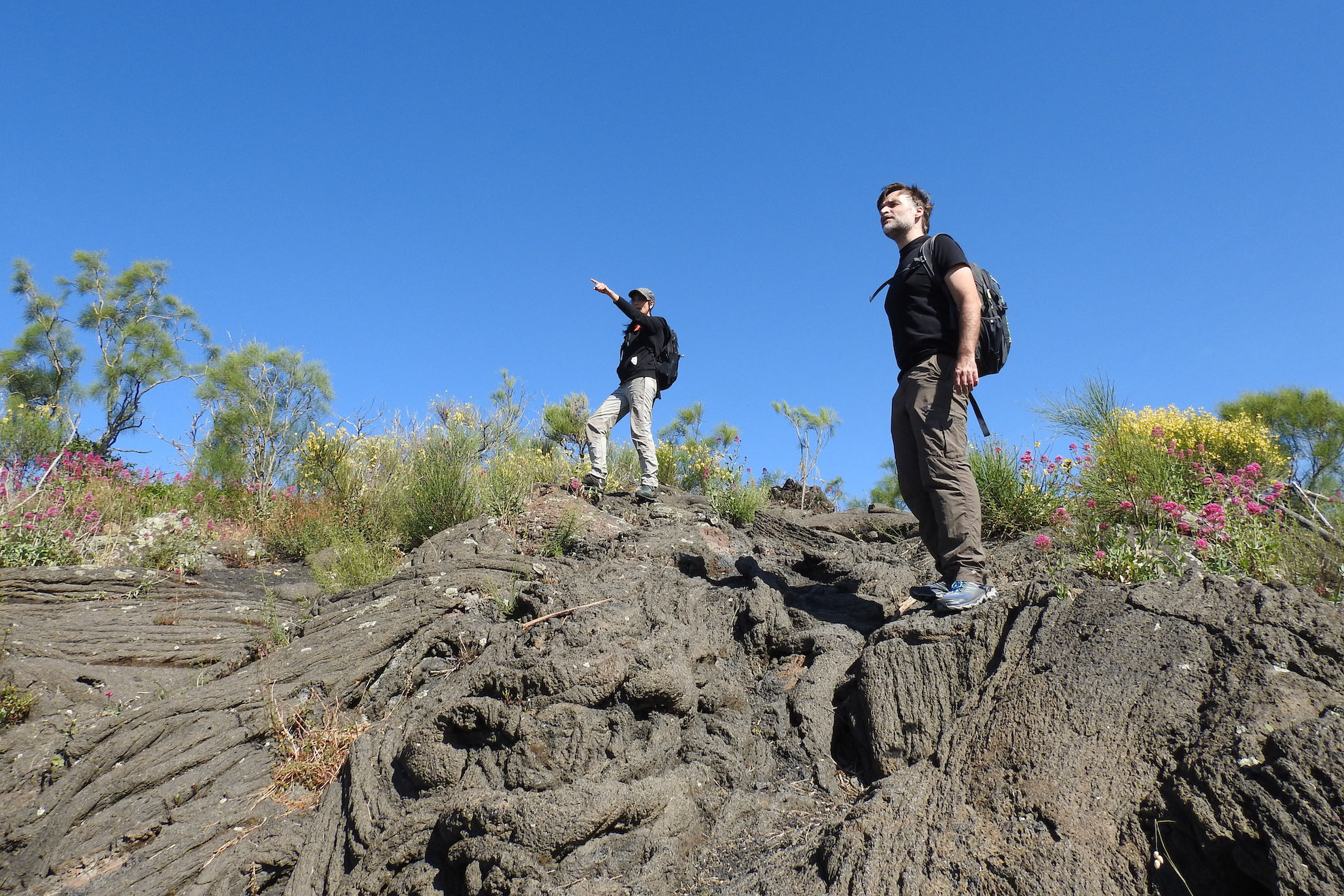
Despite the name, the Valley of Hell is a very hospitable place. The demonic appellation is the result of its geological history: «It is an area where many eruptive vents and several lava domes arose between 1881 and 1937, which determined its morphology».. It is not difficult to imagine, therefore, that for more than 50 years venturing into the Valley must have been a real descent into hell, amidst fumes, gas, lava and active terrain...
Among the valerian flowers | Ph. Raffaele Imondi - Trentaremi
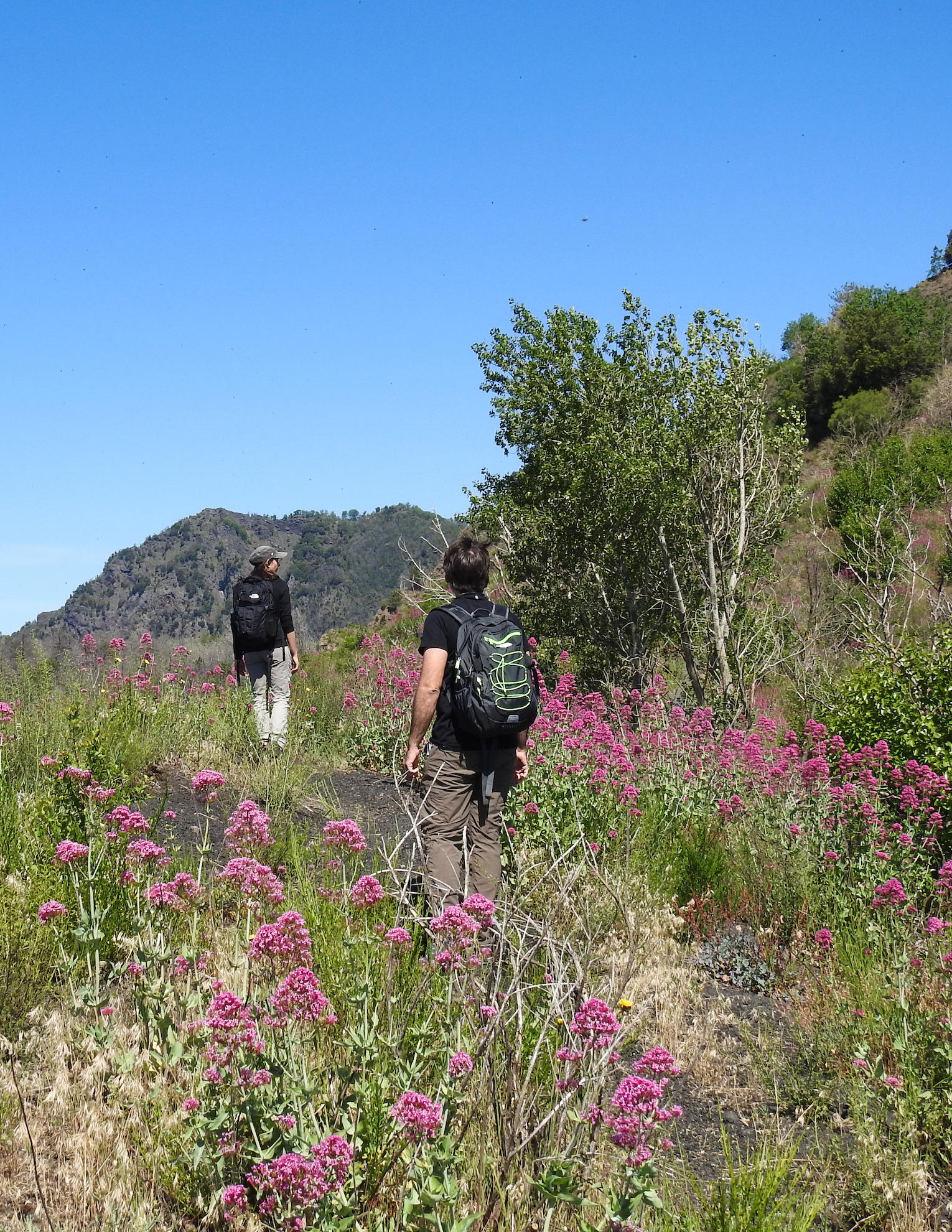
The intense yellow of the Spanish broom | Ph. Raffaele Imondi - Trentaremi
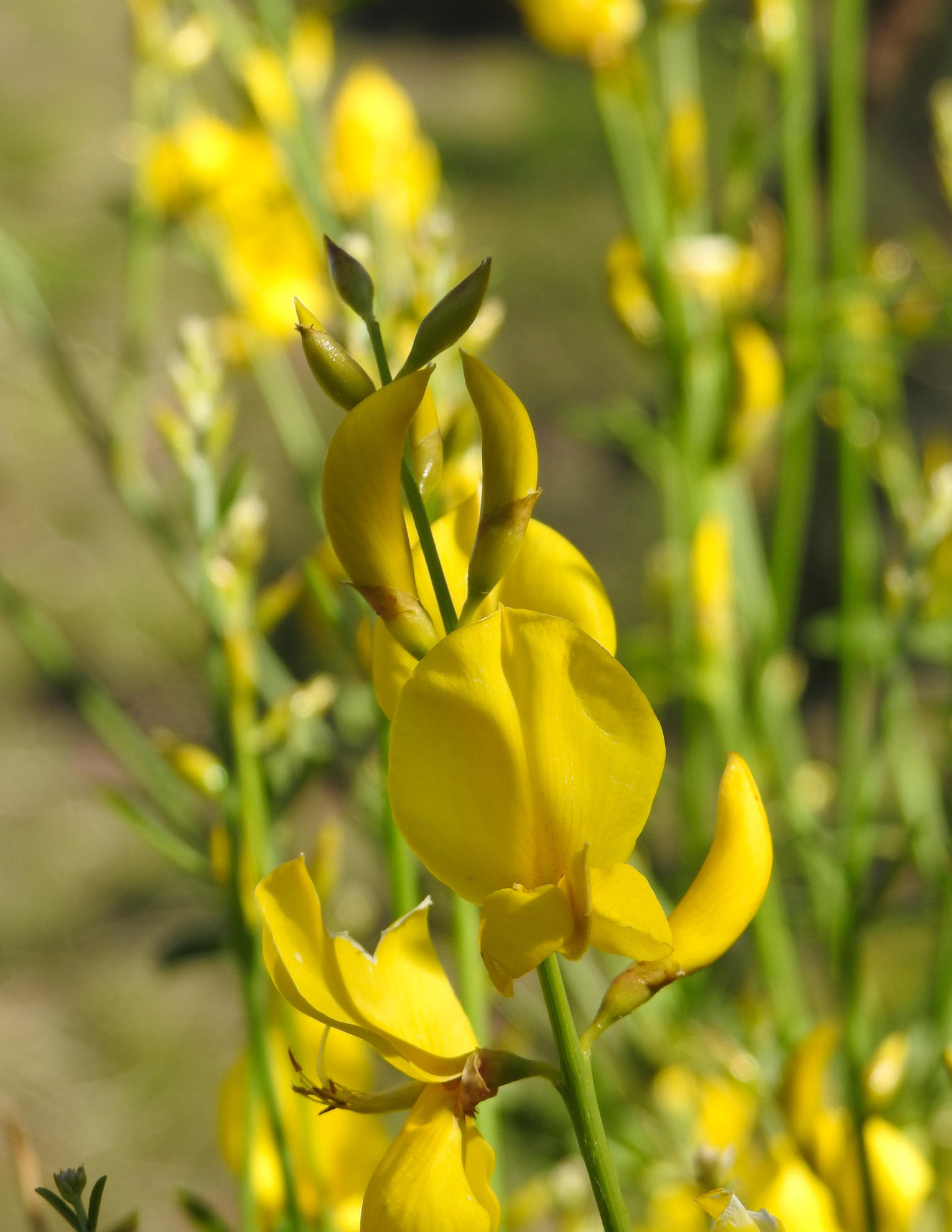
Since the last eruption in 1944, the Somma-Vesuvius has been a quiescent volcano, rich in vegetation that is particular to the area and has given life to a unique ecosystem. «The volcanic material rich in minerals such as potassium - says Giulia - makes the soil very fertile and hospitable for many animals such as foxes, hares, vipers, green whip snakes, emerald toads and birds. Everywhere you see the burrows dug by small mammals».
Along the way, you can admire beautiful volcanic formations such as dykes, lava crevasses and so-called rope lava. These are «particular rock compositions created due to the slow flow of the lava under the surface of the slag, cooling slowly. The slow and repeated movement of the lava forms these characteristic folds that look exactly like ropes».
The view on the Lattari Mountains | Ph. Raffaele Imondi - Trentaremi

The panorama that opens up all around the Valley of Hell is breathtaking: the Lattari Mountains, Castellammare, the southern part of the Gulf of Naples, the Agro Nocerino and Sarno. Giulia is right, when you walk in the Valley, you feel the grandeur of the two volcanoes. The suggestive shapes of Monte Somma, which seen from below resemble mythological creatures; the dark colour of the lapilli and the brightness of the vegetation that colours this valley. The excursion to the Valley of Hell involves all the senses. An unforgettable experience.

